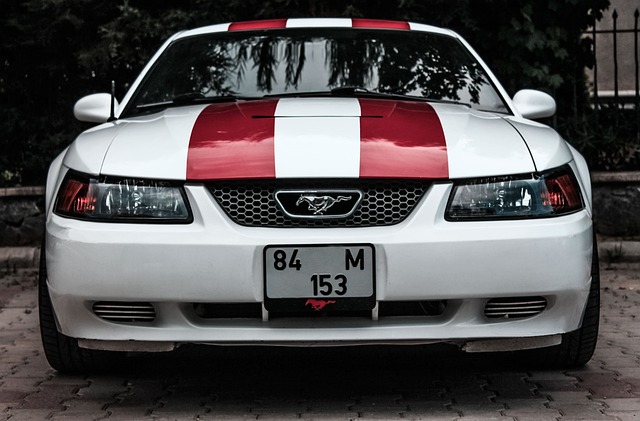Classic car insurance is designed to provide specialized coverage for vintage and collectible vehicles. Unlike regular auto insurance, which focuses on everyday use, classic car insurance caters to vehicles that are often driven sparingly and hold significant historical or sentimental value. To qualify for this type of policy, both the vehicle and the owner must meet specific eligibility criteria. Understanding these requirements can help you determine whether your car qualifies and ensure you get the best coverage possible.
Vehicle Eligibility Requirements
1. Age of the Vehicle
Most insurers consider a car to be “classic” if it is:
- At least 20 to 25 years old
- In good condition or restored to its original state
Some policies may also cover antique cars (over 45 years old) or modern collectibles with limited production runs.
2. Condition of the Vehicle
The car must be in excellent or well-maintained condition. Insurers often require:
- Photographs of the vehicle
- Proof of restoration or maintenance work
- A recent appraisal to confirm its value
3. Usage Restrictions
Classic car insurance is intended for cars driven on a limited basis. Common usage requirements include:
- Driving only for leisure, car shows, or parades
- Annual mileage limits, often capped at 5,000 miles or less
Using the car for daily commutes or errands typically disqualifies it from coverage.
4. Storage Requirements
Insurers often mandate secure storage conditions to protect the car from theft or damage. Acceptable options include:
- A locked garage
- A secure facility specifically designed for classic cars
For more details on how classic car insurance differs from regular auto insurance, visit How Is Classic Car Insurance Different from Regular Auto Insurance?.
Owner Eligibility Requirements
1. Clean Driving Record
A history of safe driving is crucial for qualifying for classic car insurance. Insurers may review:
- Your driving record for the past three to five years
- Traffic violations, accidents, or DUIs
A clean record demonstrates responsibility and reduces the insurer’s risk.
2. Age and Experience
Many insurers require applicants to:
- Be at least 25 years old
- Have a minimum of 5 to 10 years of driving experience
Younger drivers or those with limited experience may face challenges in securing coverage.
3. Proof of Ownership
As the car owner, you must provide proof of ownership, such as:
- A title or registration in your name
- Documentation verifying any co-ownership arrangements
4. Commitment to Preservation
Insurers expect classic car owners to take steps to preserve their vehicles. This includes:
- Regular maintenance and servicing
- Using authentic parts for repairs and restorations
Additional Requirements
1. Agreed Value Policy
Most classic car insurance policies use an agreed value system. You and the insurer agree on the car’s value when the policy begins. This ensures:
- Full reimbursement for the agreed value in case of a total loss
- No depreciation deductions
Learn more about valuation methods in How Are Collision Coverage Premiums Determined?.
2. Proof of Limited Use
Insurers may request odometer readings or annual mileage reports to confirm that the car is driven within the agreed limits.
3. Car Club Memberships
While not always mandatory, membership in a recognized car club can strengthen your application. It demonstrates your active involvement in the classic car community and your commitment to preserving your vehicle.
Real-Life Example: Meeting the Eligibility Requirements
A friend of mine recently purchased a 1969 Chevrolet Camaro and applied for classic car insurance. The process involved submitting photographs, a recent appraisal, and proof of secure garage storage. Additionally, her clean driving record and limited use of the car—primarily for weekend drives and car shows—helped her easily qualify for a tailored policy. The agreed value coverage provided her with peace of mind, knowing her investment was well-protected.
Why Meeting Eligibility Requirements Matters
Classic car insurance is designed to protect unique vehicles while maintaining affordability through limited use and strict criteria. By meeting these requirements, you ensure that your car is adequately covered without overpaying for coverage designed for daily drivers.
Tips for Securing Coverage
- Document Everything: Keep records of maintenance, restoration, and appraisals.
- Invest in Secure Storage: A locked garage not only protects your car but also reduces insurance premiums.
- Understand Your Policy: Familiarize yourself with usage restrictions and other terms to avoid claim denials.
- Shop Around: Compare policies from insurers specializing in classic car coverage to find the best fit for your needs.
Classic car insurance eligibility requirements are more stringent than those for regular auto insurance, reflecting the unique nature of these vehicles. From maintaining a clean driving record to ensuring proper storage, meeting these criteria is essential for securing coverage. By understanding and fulfilling these requirements, you can protect your classic car while enjoying the benefits of tailored insurance.



